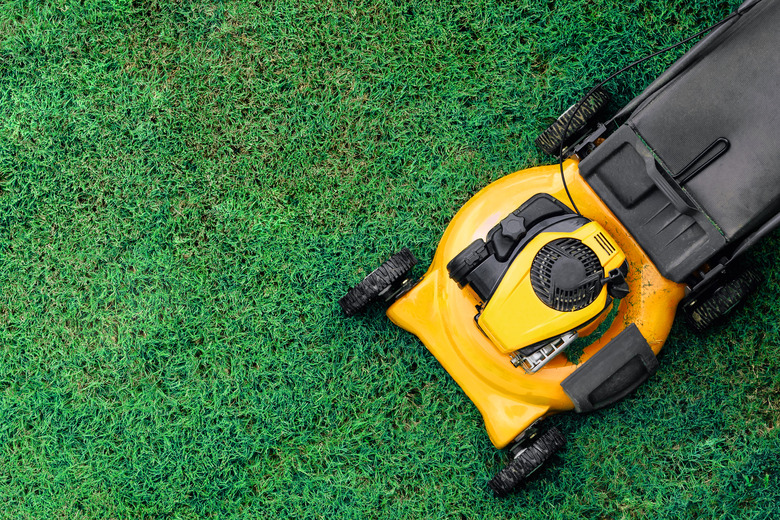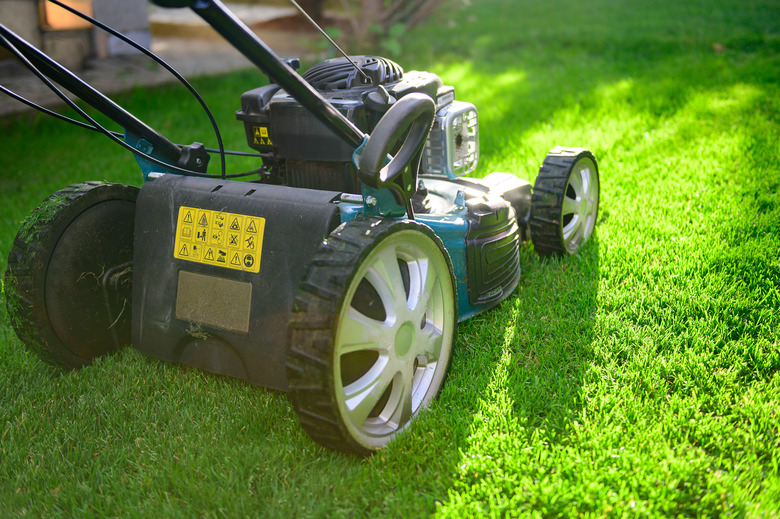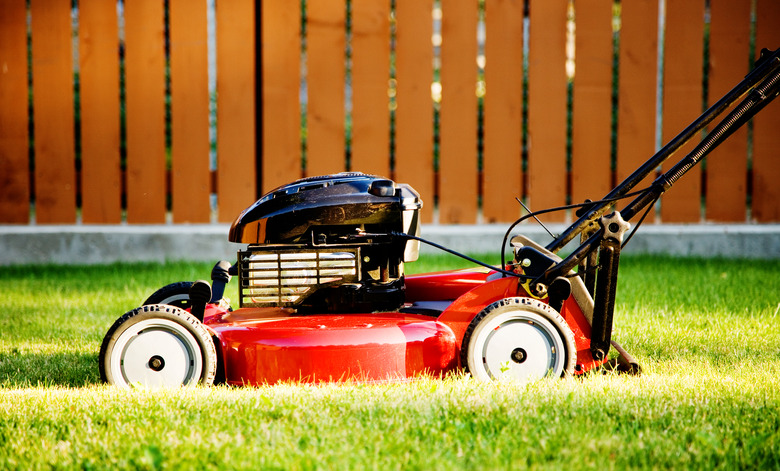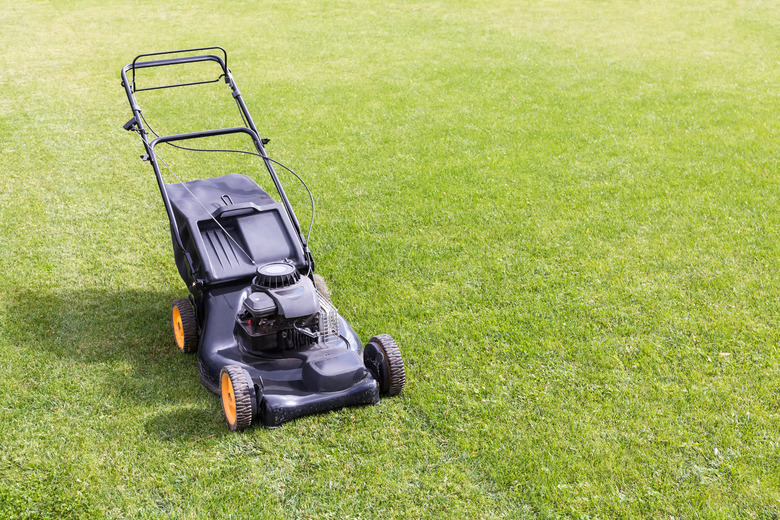Lawn Mower Tune-Up And Maintenance Tips
We may receive a commission on purchases made from links.
Lawn mower maintenance may seem like drudgery, but the reality is that routine mowing will be easier and more enjoyable if you follow a handful of maintenance tips on a weekly or monthly basis. This will not only make your lawn mower run more smoothly during mowing season, but it will also help your lawn equipment last longer.
Lawn Mower Maintenance Basics
Lawn Mower Maintenance Basics
Lawn mower maintenance will depend on what type of mower you own. While some maintenance tasks are common to all mowers, others are required only with some types of mowers.
Gas-powered machines have the longest list of lawn mower maintenance tasks. They can be divided into two basic types: four-stroke engines and two-stroke engines. With four-stroke engines, the engine parts are lubricated by oil held in a secondary reservoir, which you will need to check before each use and top off with oil when necessary. It's also a good idea to drain and replace the engine oil once a year.
With two-stroke engines, lubricating oil is mixed in with the gasoline. This makes for a mower with fewer maintenance tasks, but these mowers are also dirtier to run, as the exhaust gases contain burned motor oil. You have perhaps seen mowers that produce a faint trail of bluish smoke as they operate — these are two-stroke engines.
Further, both types of gas mowers will require that you periodically check the air filter and either clean or replace it as necessary. There are other maintenance tasks common to all mowers, including cleaning the mower deck and sharpening the blade.
Corded electric lawn mowers are relatively inexpensive power mowers that are tethered to a long electrical cord that powers an electrical motor that turns the blade. These mowers have relatively few maintenance tasks: cleaning the mower after each use and sharpening the blades once a year or so.
Cordless electric lawn mowers are increasingly popular because they are free of electrical cords and don't produce exhaust fumes. These mowers operate with a large rechargeable battery that spins the motor spindle to turn the blade. Cordless mowers also have a fairly small list of maintenance tasks, including cleaning the mower after each use and sharpening the blade.
Manual push-style lawn mowers are a favorite among environmentally conscious homeowners since they use no fossil fuel at all — not even electricity. Though they can be somewhat clumsy and laborious to use, especially if you have a large lawn, these mowers have minimal maintenance needs other than cleaning them, lubricating joints and sharpening the blades every so often.
Check the Gas
Check the Gas
Frequency: before each use. With a gas-powered mower, it's best to keep the fuel tank topped off rather than allowing it to run dry. Use whatever grade of gas is specified by the manufacturer — normally, low-octane unleaded gas. When filling, use a funnel or a gas can with a flexible goose neck to make sure you don't spill gasoline around the engine. If you do happen to have a mishap and spill some gas, wipe away as much as you can and then allow any lingering gas to evaporate before you start the motor. Gas fumes lingering around the spark plug can easily ignite.
With two-stroke engines, the gasoline needs to be mixed with two-stroke oil before you fill the gas tank. Use whatever oil is specified by the manufacturer but not ordinary automobile motor oil. Two-stroke engine oil contains a fuel stabilizer designed to keep small engines running smoothly.
Check and Fill the Oil
Check and Fill the Oil
Frequency: before each use. On four-stroke engines only, check the level of the motor oil in the reservoir before starting the engine. With some mowers, there will be a simple fill cap that you remove to check the oil level in the reservoir. Larger, more advanced mowers, including riding lawn mowers, usually have a dipstick to check the oil.
If the level is low, top off the reservoir with the oil recommended by the manufacturer, usually a standard oil for small engines. Make sure to use a funnel to avoid spilling and make sure not to overfill the reservoir, as this can affect the operation of the engine.
Check the Battery
Check the Battery
Frequency: before each use. With cordless electric mowers, always begin your mowing session with a fully charged battery. This sometimes requires a full overnight charging session. While some homeowners like to keep the battery plugged in constantly for recharging, some manufacturers and experts recommend allowing the battery to drain fully between uses. Battery life may be longer if you let it fully run down and then plug it in the night before you plan to mow.
If you have a traditional gas-powered mower with an electric start rather than a pull start, it uses a different type of battery to operate the starter. These lead-acid batteries gradually lose their effectiveness over time and may need replacement. If your electric-start mower fails to turn over, first make sure the battery cables are secure. If you still get no action from the starter, it's possible that the battery needs to be replaced, following manufacturer's instructions. Make sure to replace the battery with an original equipment manufacturer (OEM) model.
Check the Cables and Cords
Check the Cables and Cords
Frequency: before each use. All power mowers have various control cables that operate the engine/motor and the emergency-stop features. Before mowing, check the operation of these controls and make any tightening adjustments that are necessary.
On powers mowers that start by means of a pull cord, examine the condition of the pull cord and make sure the rewind assembly spins smoothly. If the rewind mechanism binds or does not rewind smoothly, it may be time to replace it.
Clean the Mower
Clean the Mower
Frequency: after each use. How meticulous you are about cleaning a lawn mower depends on how compulsive you are about such things, but even the most casual of DIYers should at least brush off grass clippings from the top of the mower deck and around the exhaust port/muffler, air filter and spark plug. It's a good idea to tilt the mower onto its side and brush down the bottom of the deck with a long-handled brush. Over time, grass clippings can become caked on in a rock-hard layer that will prevent the mower from cutting effectively.
Of course, there's nothing wrong with being more detailed about the routine cleaning. Avoid using hard water spray to clean your mower, as you may drive moisture into parts that don't like water.
Sharpening the Blade
Frequency: once a year. A mower with a dull blade tends to tear the leaves of grass rather than cutting them cleanly. A lawn mowed with a dull blade will have brownish tips on the ends of the grass leaves, making for an overall dingy-looking lawn. Once a year, remove the blade and sharpen it with a metal file or bench grinder.
First, disconnect the spark plug to eliminate any chance the mower will start. Lay the mower on its side and mark the blade so you remember which side faces down. Take care not to spill gasoline out of the mower as you tilt it; you may want to first run the mower dry of fuel. Use a long-handled socket wrench to loosen the center mounting nut on the blade in a counterclockwise direction.
Clamp the blade in a bench vise to sharpen the cutting edges with a metal file. Follow the original bevel angle on the blade. You can usually adequately sharpen the blade with no more than 50 light passes of the file. Make sure to sharpen evenly on both ends of the blade so it remains well balanced. The goal is a blade that is about as sharp as a table knife; there's no need for razor-sharp edges.
You can also sharpen a mower blade using a bench grinder, but make sure not to overheat the soft metal, which will ruin its quality.
New mower blades are often not very sharp when shipped from the manufacturer. They will benefit from sharpening even before they are used for the first time. If you are uncertain of your sharpening skills, any hardware store will sharpen the blade for a small fee.
Change the Oil
Change the Oil
Frequency: once a year. On four-stroke gas engines, the engine oil will gradually get dirty and lose its ability to effectively lubricate engine parts. Once each year, drain the oil and replace it. This is usually done by removing a drain plug located on the bottom of the mower deck, allowing the oil to drain out. Then, replace the plug and refill the crankcase. The exact procedure will vary depending on the manufacturer.
Some large mowers also have oil filters. If so, it's a good idea to change this at the same time you are replacing the engine oil.
Clean or Replace the Air Filter
Clean or Replace the Air Filter
Frequency: once a year. All gas-powered mowers have (or should have) a pleated paper or foam air filter that fits in front of the air intake opening. Some air filters use dual elements, with a foam precleaner followed by a pleated paper filter. Foam filters can often be cleaned with hot water and a grease-cutting detergent, but pleated paper filters need to be replaced.
The air filter is found inside the air cleaner assembly and is accessed by removing a cover held in place with a long machine screw or wing nut secured to a mounting bolt. Clean the filter if possible or replace it with a new one. Make sure to properly replace any rubber gaskets around the filter or cover as you reassemble.
Inspect/Replace the Spark Plug
Inspect/Replace the Spark Plug
Frequency: once a year. Gas-powered engines all use a spark plug to ignite the gasoline vapors. On most mowers, the spark plug is readily visible, with the wide electrode end threaded into the engine cylinder and the narrow terminal end extending outward, where it is connected to a spark plug wire running from the flywheel armature.
A spark plug can last for many years, but to ensure good operation, inspect the spark plug yearly and replace it when necessary. Some manufacturers recommend replacing the spark plug annually.
To inspect or replace the plug, begin by disconnecting the spark plug wire from the end of the plug using a spark plug socket to unscrew it from the engine cylinder (make sure no debris falls into the cylinder as you remove the plug). Inspect the electrode on the wide end of the plug. If it is corroded or blackened, you may be able to scrape or sand away the residue. If you choose to replace the plug, buy one with exactly the same specifications. Adjust the gap on the electrode as specified by the engine manufacturer using a gapping tool.
Screw the new or cleaned spark plug back into the engine cylinder, reattach the spark plug wire and test to make sure the engine runs smoothly.



